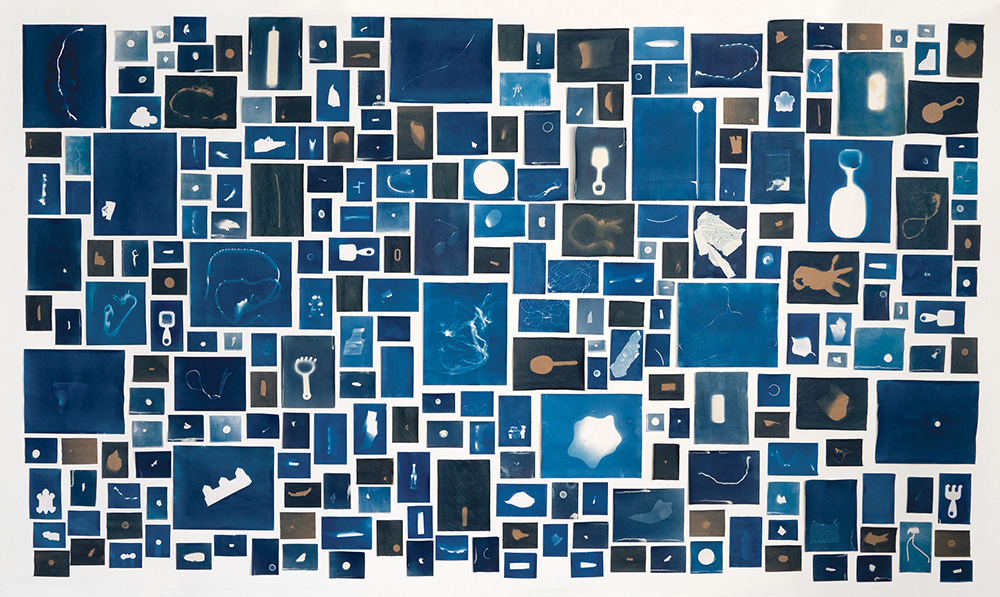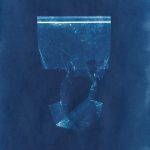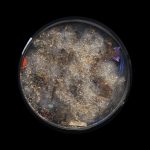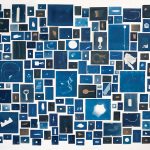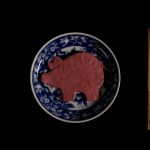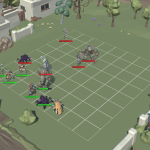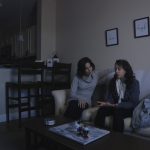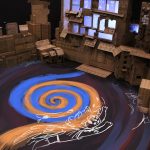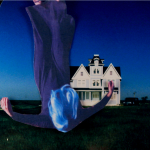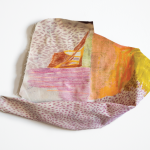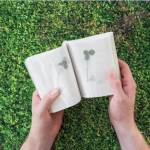Photographer Elizabeth Ellenwood was working at a photo lab in Boston making prints when she decided it was time to further explore her own artistic endeavors.
“I also had an interest in teaching. I wanted to find a place that would give me the opportunity to try out teaching and see if that’s something that I wanted to continue working on,” she says about enrolling in the MFA program in Studio Art three years ago. “While I enjoyed being in the dark room, I was making prints for other people. I just really wanted more time to focus on my own artwork.”
Ellenwood’s exploration of her own photography and art can be seen in the unique 2020 edition of the annual Master of Fine Arts Thesis Exhibition at The William Benton Museum of Art, which is posted on the museum’s website due to the COVID-19 pandemic. The online exhibition in Studio Art is titled “Tideland” and in addition to Ellenwood includes the works of painter and sculptor Olivia Baldwin, multimedia artist Shadia Heenan Nilforoush, and artist and printmaker Chad Uehlein. The Digital Media & Design online exhibit is titled “Square One” and includes the works of Jonathan Ampiaw, Karin Ching, Stefan Lopuszanski, Laurel Pehmoeller, and Jasmine Rajavadee.
Spending many hours walking along the beach growing up in Florida and Connecticut, Ellenwood would pick up trash to follow the advice of her grandfather to “Leave the beach better than we found it.”
Now living in Pawcatuck, when she started the MFA program Ellenwood decided that one way to join her art and her lifetime of walking along the beach with an eye toward environmental awareness would be to use some of what she collected in her photography. “I had this moment [thinking] that I’m collecting things that I use and that other people use and I wanted to share that awareness, so I started using photography as a tool to do that,” she says. “And it just continued to grow.”
Over the past three years the project grew into “Among the Tides,” a collection of images in which Ellenwood uses a variety of photo processes to create an artistic visualization of the impact consumerism is having on the world’s oceans and those who are trying to save them. “Among the Tides” had its debut earlier this year at the Alexy von Schlippe Gallery at UConn’s Avery Point campus and was supported by the School of Fine Arts’ Zachs Award and a Connecticut Sea Grant Arts Support award. During the run of the exhibit, Ellenwood participated with J. Evan Ward, professor and head of the Marine Sciences Department, in a program titled “Visualizing Plastic: Integrating Science and Art to Inspire Change.” The program was part of the annual Coastal Perspectives Lecture Series at Avery Point.
The images Ellenwood created include a crumpled plastic bottle printed on expired photographic paper; a collection of beach trash from 3,417 items picked during 39 beach walks covering nearly 36 miles; digital enlargements of plastic and sand in Petri dishes; prints of material viewed through a microscope; and video of the deterioration of debris materials in the water. She uses a range of photographic processes including cyanotype, a printing process used to create a cyan-blue print; and anthotype, an image created by using the light sensitivity from plants. She also uses expired photographic papers and film, which provide creative options in printing.
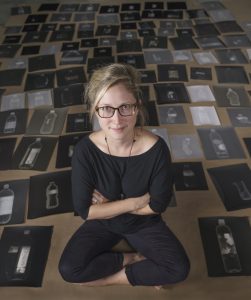
“I’m using all of these materials and time in a different way. I really enjoy working that way as an artist,” Ellenwood says. “I love the creating aspect and that tangible feeling of making a print, either if it’s a silver gelatin print or a cyanotype. When I started making this work about waste and what people are using, I realized that I now have a perfect project to use all the [discarded] dark room paper and film that I’ve been squirreling away. It provided a really good opportunity to use materials that can also speak to what I’m making.”
Her other photography projects cover a wide range of subjects including a series of multiple exposures, portraits of city life, a series of telephone and electrical wires against the sky between buildings, and a hybrid of old photo prints transposed with digital images.
Ellenwood says that following her undergraduate work at The New Hampshire Institute of Art, she was interested in the UConn MFA program because of the range of resources available at a large research institution.
“I wanted to be in a university that had the option of meeting people who are doing other things,” she says, noting that she did a project on Hawaiian bobtail squid after learning about the research of Sarah McAnulty, an assistant research professor in molecular and cell biology who is a specialist on squids and the founder and executive director of the Skype a Scientist program. “When I started becoming really obsessed with cephalopods and was working on a project focusing on their defense mechanisms, she invited me to her lab and I got to see her research. There’s this great opportunity to have all these crossovers at the university and I really appreciated that.”
Ellenwood recently won a Fulbright Scholarship and an American Scandanvaian Foundation Grant to Norway for 2020-2021. She will be collaborating with an environmental chemist and a marine biologist to create work based on marine pollution.
In the “Tideland” Studio Art exhibit, Nilforoush roots her practice in performance and video, mapping family archives, personal histories and polarized identities. Olivia Baldwin traverses sculpture and painting, casting color across walls, floors, and ceilings. Chad Uehlein’s cheeky installations and ad-hoc inventions become sites for performances that suspend time and vanquish efficiency on his quest for hope.
“Square One” offers a variety of mediums including narrative film, hybrid digital and physical games, animation, installation, and projection mapping. Each exhibited work acts as a window through which the audience can access new worlds, personal memories, and cultural reflections, connecting visitors to where each artist started.
Ampiaw’s video game explores the themes of personal development and social growth. Lopuszanski’s game blurs the line between the digital and physical realms to create an innovative gameplay experience. Ching examines her journey to a new country, illustrating the cultural differences she has discovered between Taiwan and the United States, centered around food. Pehmoeller’s short film reflects on her own experiences as a young adult trying to find her way in the world. Rajavadee investigates the artist’s Lao-American upbringing with reference to cumulative memories and emotions associated with connecting the personal and the (multi)cultural.
